The Revolt of Taira no Tadatsune
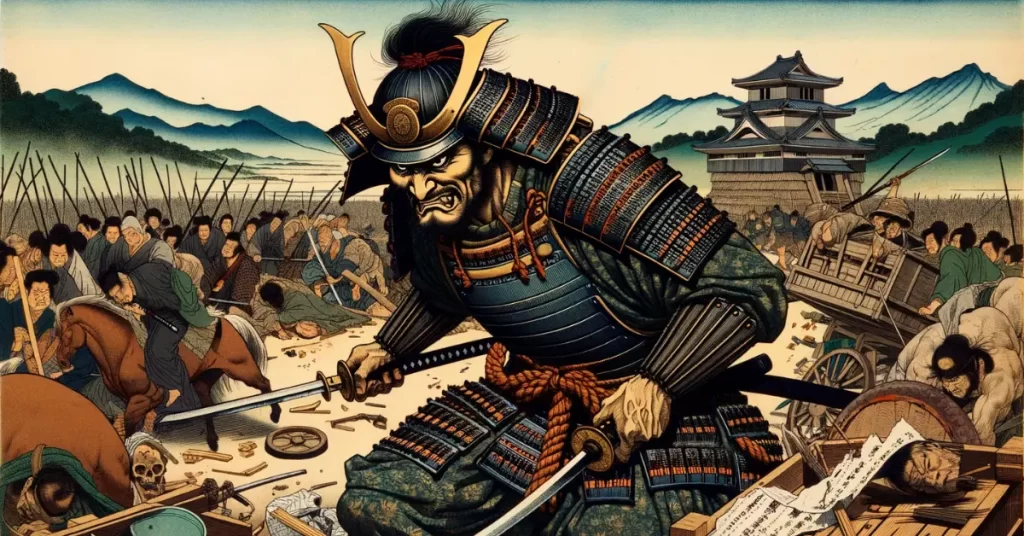
In 11th-century Japan, Taira no Tadatsune rebelled against imperial authority in Shimōsa, Awa, and Kazusa provinces. The revolt, marked by clan rivalries and defiance of provincial governors, caused widespread devastation in the affected provinces. He was eventually quelled by Minamoto no Yorinobu.
Shōchū Incident – Emperor Go-Daigo’s First Attempt to Overthrow the Kamakura Shogunate
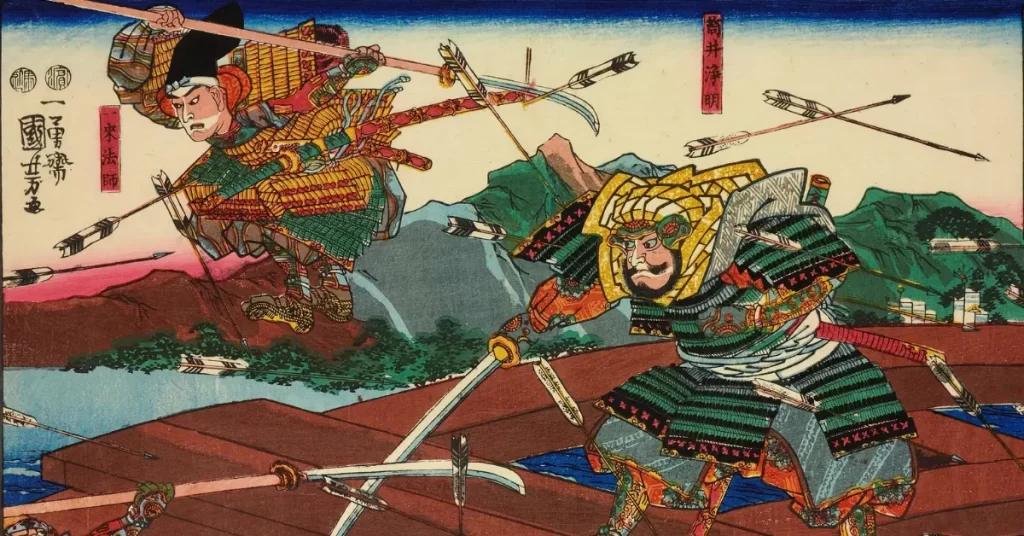
The Shōchū Incident in 1324 was a failed coup by Emperor Go-Daigo against the Kamakura shogunate. It resulted in the punishment of key conspirators, including Hino Suketomo, who was exiled. Go-Daigo, however, got away with little repercussions. Read on to learn more about how the plot came about and how it was discovered.
Genko War – Emperor Go-Daigo’s Quest to Topple the Kamakura Shogunate
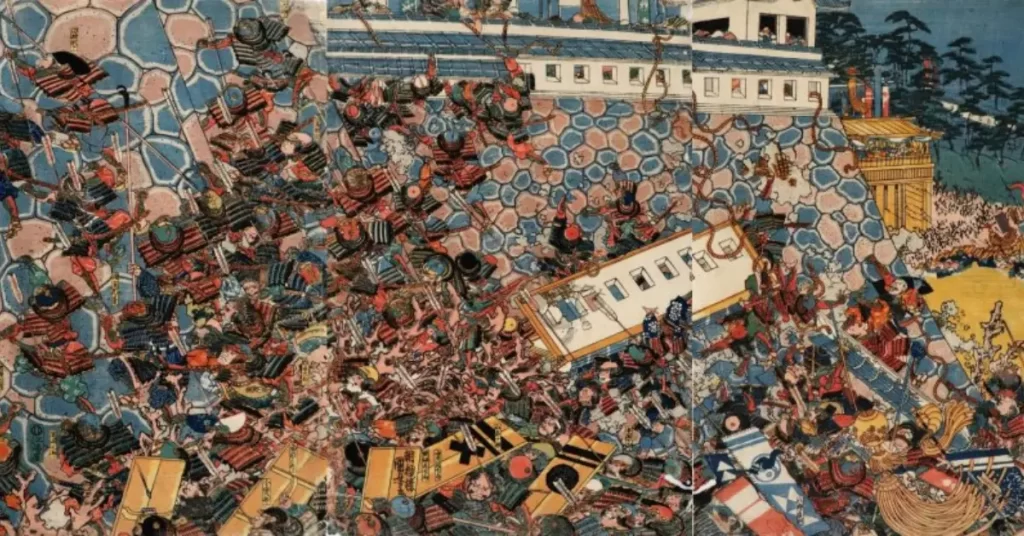
The Genkō War, a pivotal civil war in Japanese history, began with Emperor Go-Daigo’s ambition to overthrow the Kamakura Shogunate and restore imperial rule, leading to the first uprising in 1331. This was followed by a series of fierce battles, including Go-Daigo’s capture and exile, and the defection of Ashikaga Takauji to the emperor’s cause. The climax came with the Siege of Kamakura in 1333, resulting in the fall of the Kamakura Shogunate and the mass suicide of the Hōjō clan. In the aftermath, Emperor Go-Daigo returned to Kyoto, initiating the Kenmu Restoration to reestablish imperial authority.
Genpei War of 1180 – The Epic Deathmatch between Taira and Minamoto Samurai Clans
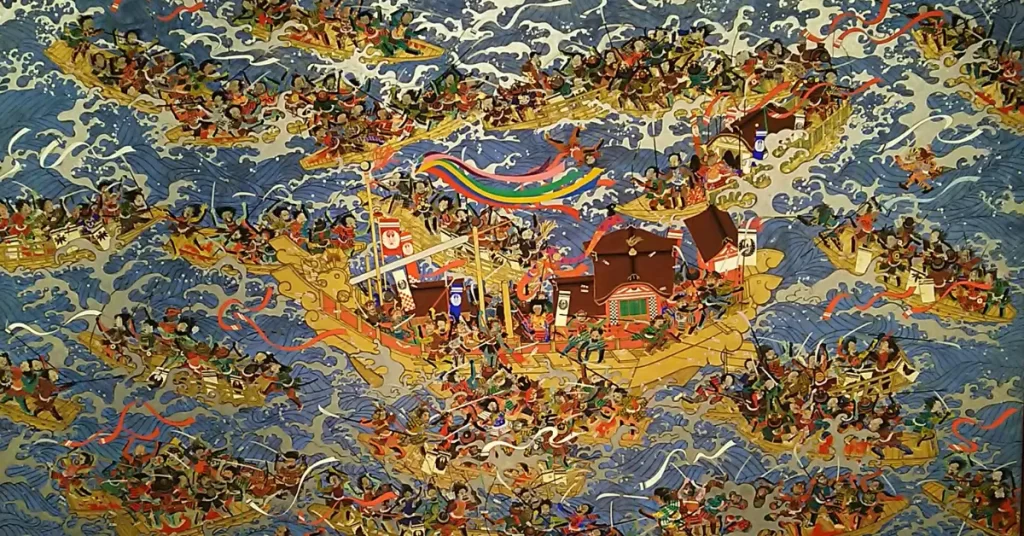
The Genpei War (or Gempei War) was a national civil war between the Taira and Minamoto clans in the late Heian period, from 1180 to 1185. The escalating tensions and power struggles within the imperial court led to a series of fierce battles, including the significant Battle of Dan-no-ura. The Minamoto’s ultimate victory led to the establishment of the Kamakura shogunate under Minamoto no Yoritomo, shifting power from court aristocracy to a military government and elevating the samurai class. This period saw the decline of the Taira, redistribution of lands and titles among Minamoto loyalists, and significant cultural and societal shifts, including the rise of militaristic values, setting the stage for Japan’s feudal era.
Jokyu Disturbance – Emperor Go-Toba’s Fight Against the Kamakura Shogunate
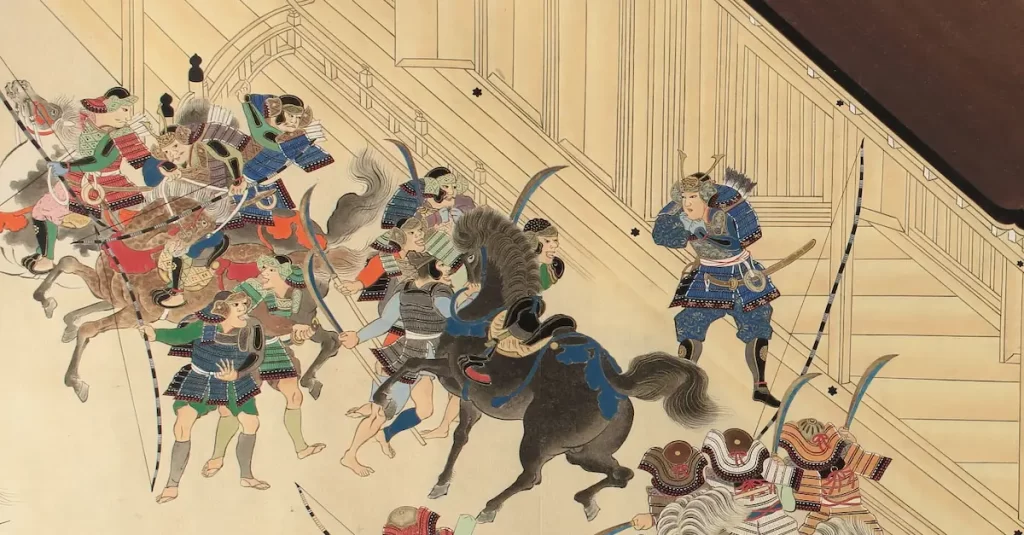
The Jōkyū Disturbance, also known as the Jōkyū War, was a 13th-century conflict in Japan between Retired Emperor Go-Toba and the Hōjō clan of the Kamakura Shogunate. It began with Go-Toba’s attempt to overthrow the shogunate, leading to a series of battles, notably at Uji, resulting in the shogunate’s victory and the capture of Kyoto. The aftermath saw Go-Toba exiled, the redistribution of lands to shogunate loyalists, and the establishment of the Rokuhara Tandai, significantly reducing the imperial court’s power and marking a shift towards the dominance of military rule in Japan.
Gosannen Kassen – Later Three Years’ War of Samurai in Heian Era
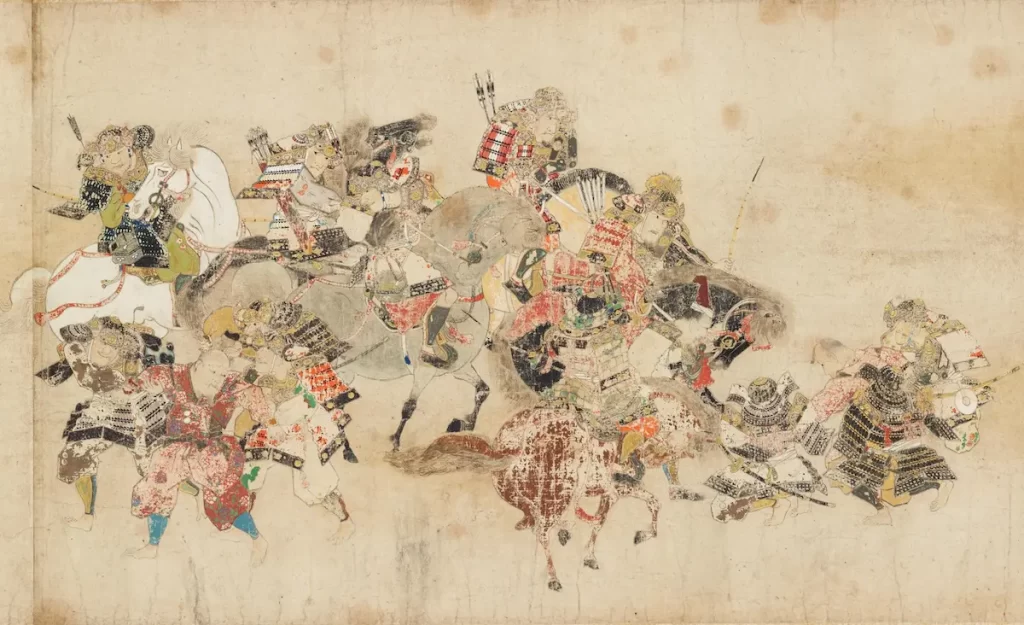
The Gosannen War, or the Later Three Years’ War, was a pivotal conflict during the late 1080s in Japan’s Heian Period, primarily in Mutsu Province. It began with internal disputes within the Kiyohara clan, escalating as Minamoto no Yoshiie intervened, initially as a mediator and later as a combatant. Key battles included the protracted siege of Kanezawa Stockade, showcasing the evolving tactics and courage of the samurai class. Despite Yoshiie’s military success, the war’s aftermath was marked by his dismissal from governorship and lack of official recognition from the imperial court. Fujiwara no Kiyohira, who allied with Yoshiie, emerged as a significant regional power.
Heiji Rebellion of 1160 – Taira no Kiyomori’s Domination over Minamoto Clan
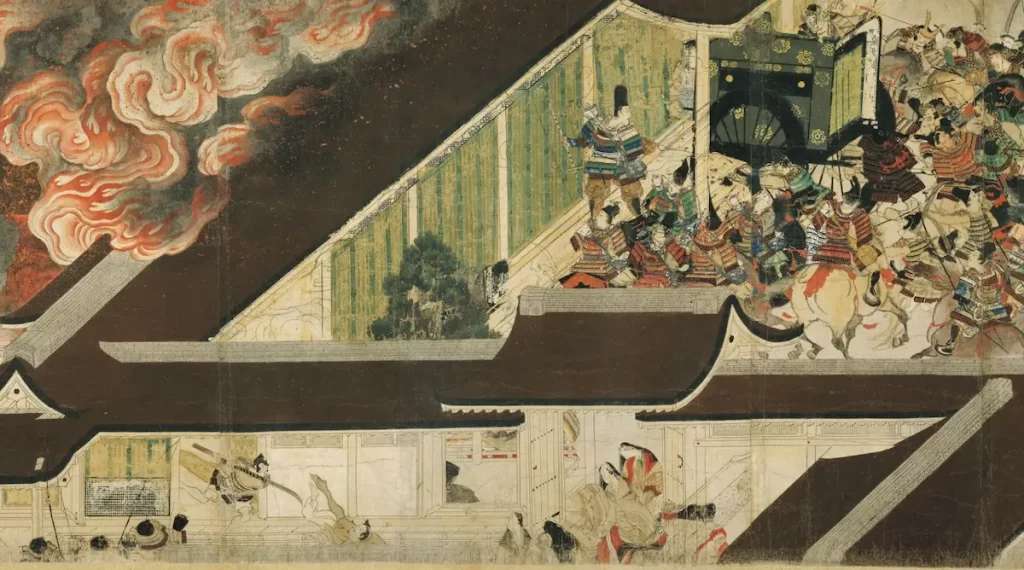
The Heiji Rebellion (Heiji no ran) in Japan’s Heian period was a power struggle between the Taira and Minamoto clans. It was intensified by the political maneuvering of court figures like Fujiwara no Michinori (Shinzei) and Fujiwara no Nobuyori. The conflict reached its zenith with the Minamoto clan’s attack on Sanjō Palace, capturing Emperor Go-Shirakawa and Emperor Nijō. However, Taira no Kiyomori’s strategic return from pilgrimage and the subsequent escape of the emperors to his side turned the tide against the Minamoto. The rebellion ended with a decisive defeat of the Minamoto clan, leading to the rise of the Taira clan’s dominance in the Japanese political arena.
Hōgen Rebellion of 1156 – The Japanese Samurai’s Ascent to Political Power
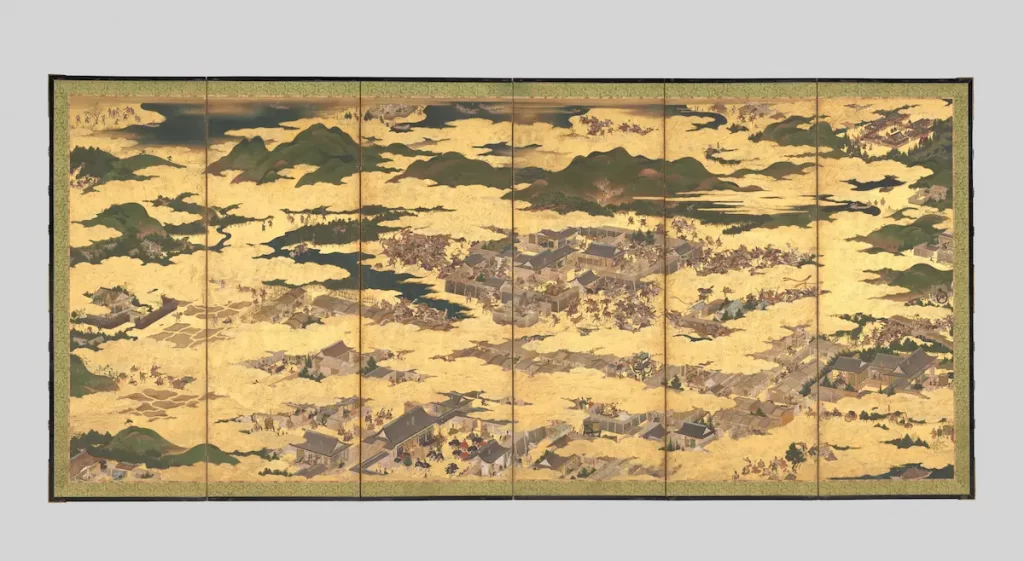
The Hōgen Rebellion (Hōgen no ran), during Japan’s Heian period, was a crucial turning point marked by a struggle for Imperial succession and the rise of the samurai class. It began with a power dispute within the imperial family and the Fujiwara clan, leading to the involvement of samurai leaders like Minamoto no Yoshitomo and Taira no Kiyomori. The conflict peaked with the Siege of Shirakawa-den, where Emperor Go-Shirakawa’s forces defeated those of retired Emperor Sutoku. The aftermath saw Sutoku’s exile and the rise of the samurai’s influence. It signaled a shift from aristocratic to military dominance in Japan’s political landscape.
Ōnin War – The Birth of Japan’s Sengoku (Warring States) Era
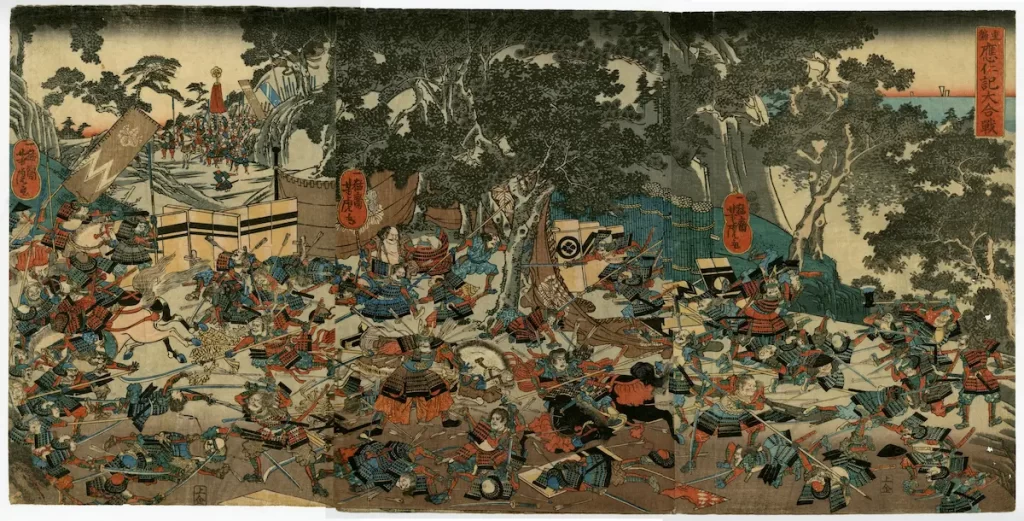
The Ōnin War (1467-1477), also known as Ōnin-Bunmei war, gave rise to Japan’s Sengoku (Warring States) period. It started with a shogunate succession dispute and escalated into a fierce conflict between the Eastern and Western Armies. Despite its intensity, the war ended without a clear victor. The war led to the decline of the shogunate and the rise of powerful daimyo, ushering in an era of widespread warfare and social transformation in the history of Japan.
Battle of Sekigahara – The Fight for Japan’s Unification

The Battle of Sekigahara was a defining moment in Japanese history in 1600. This battle not only decided the political fate of Japan but also marked the beginning of the Tokugawa Shogunate, a period that significantly influenced the country’s future. Explore the events leading up to the battle, the intense and strategic combat that ensued, and the profound changes that followed.
